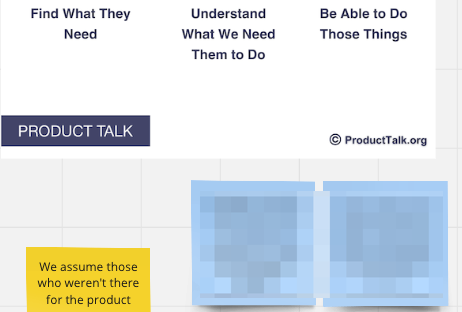When striving to make a Community of Practice or Book Club more engaging, there’s nothing quite like getting the team to actually try out the method that they’ve just read about. It’s also one of the best ways to help cement what everyone has just read (or listened/watched).
Example 1: Try it Out for The Five Types of Assumptions
After reading Teresa Torres’ The Five Types of Assumptions, my team took a swing at putting together examples of each type of assumption that they had made recently on a project.

We started off with everyone having their own ‘color’ of sticky, indicated by their name on a sticky note and a pile of stickies next to their name. Then they had time to brainstorm assumptions for each of the five types of assumptions.
One tweak I would make if I were to do this again – I would suggest that each team member try to pick one project to use throughout the whole brainstorm. Some used different projects, and some went more generic, as became apparent as we discussed. However, overall, it still led to a great conversation, and we updated our standard project template due to the deeper understanding that the team came to based on actually ‘trying it out.’


Example 2: Try it Out for The DHM Model
As another example, we read Gibson Biddle’s The DHM Model, about how product strategy answers the question “How will your product delight customers, in hard-to-copy, margin-enhancing ways?”
Rather than just talking about it, we looked to see what this meant for us, both in terms of what we were doing today and what we could do in the future. This time, different colors of stickies represented different areas of our company / our products.


Example 3: Try It Out for How to Rethink Marketing
We also used this method quite a few times during our book club Loved: How to Rethink Marketing for Tech Products by Martina Launchengco. For example, in one chapter, Launchengco talks about creating a release scale, so we started down that path during our book club meeting (with the rest to be finished outside of the book club).

When possible, ‘try out’ what you’ve learned with your team to drive home the learning.
